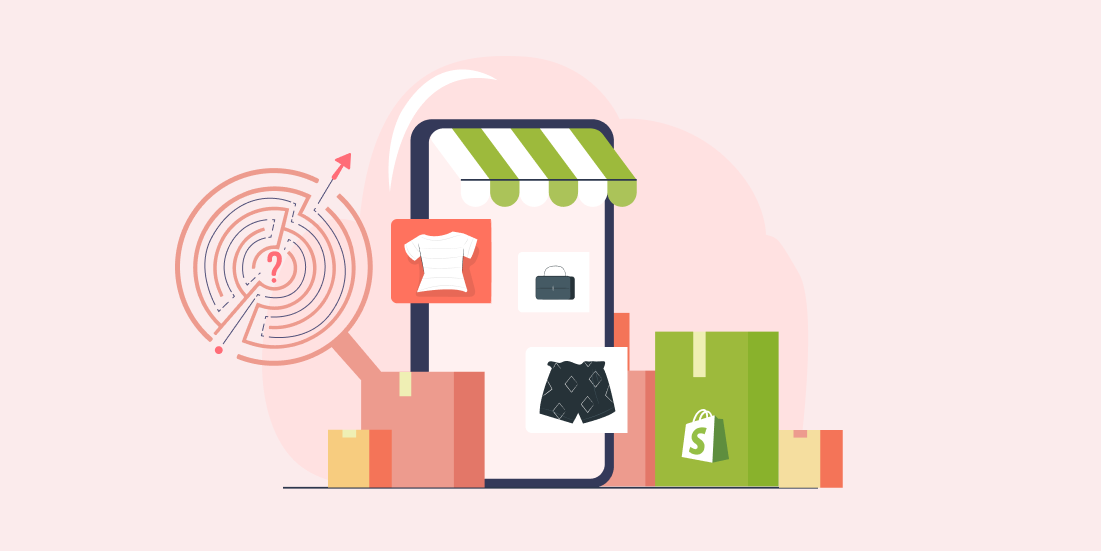Top 5 Shopify Challenges and How to Overcome Them

After the pandemic, the e-commerce industry in India had grown high. It took a huge turn to direct to the customer model. And it’s expected to grow in 2025. So, having an independent online store became a dream for all entrepreneurs.
For all those who are trying to turn their dreams into reality, Shopify can be the go-to platform. It enables retailers to create, run, and manage stores easily. It also poses challenges to the retailers that could harm the business on multiple levels. Ignoring them isn’t the right option. Here in the blog let’s discuss what can be a great challenge faced by store owners and solutions to overcome them. Let’s dig in.
1. Multi-channel Integration
Having multiple channels which are associated with the Shopify store has its benefits. When people use several Shopify stores, it benefits businesses in expanding for the best customer service. The multiple Shopify store development can be the crucial backup for the developers.
Coming to multiple channels, sellers should account for every product, and order, as well as inventory data for seamless business. Shopify sellers should answer the queries like checking order dispatch, consumer experience, and inventory status. Though Shopify enables multiple channel integration at the back end, it brings more considerable challenges than advantages.
Solution:
Managing multi-channel integration is quite tough, no doubt about it. But remember that the website should be optimized regarding categories, products, and consumers before integrating. For making multi-channel integration accessible, Shopify sellers should centralize orders to a single system. Shopify plus agency can handle multiple websites consistently without mismatch.
2. Driving traffic
Improving Shopify store discoverability is quite important for Shopify sellers. Market and advertising are the finest ways to launch a brand. The main goal is to draw several authentic consumers to the D2C products.
Solution:
For developing organic traffic with outstanding SEO try to update meta fields such as description, title, and URL slug. That generates sitemaps, canonical URLs, 301 redirects, etc. Run ad campaigns over the platforms such as Facebook, Google, and Instagram. Utilize banner ads, social media ads, influencer advertising, and Pay-Per-Click. You can even collaborate with social media celebrities via shoutouts or paid advertising.
3. ERP Integration
Shopify retailers who handle complex & high volume business processes can benefit through the ERP system integration. If you think to get a crucial raise in the order volume then a Shopify integration with the ERP system is a good choice.
Few more indications which show you require ERP integration involve:
- Too many suppliers for managing.
- Less employee productivity for manual tasks.
- Shipping products lately
- Wrong shipping because of high volume.
- Managing over one B2B customer relationship.
A Shopify agency makes sure your Shopify ERP system passes through perfect factors to make it worth it.
Solution:
Implementing ERP integration for your store isn’t compulsory. But you should move the data back and forth with the ERP & Shopify online store if you don’t integrate it. Doing tasks manually is such a waste of time which causes human errors. While evaluating ERP’s integration proficiencies, know how the ERP system receives and sends data or how it can communicate with more systems.
If the system is struggling to connect with systems. Then it can limit which processes to automate between Shopify and it. Always considers a cloud-based ERP system with a well-documented and open API. Cloud-based ERPs provide le pricing, and IT infrastructure costs, with less upfront investment.
4. Getting Products
The biggest disadvantage is getting products over Shopify. It can be annoying to notify sources regarding certain issues. Because problems can come from the marketplaces or product listings. Importing products using CSV files can fail with a simple error. It is best to fail while importing to upload them one by one.
Solution:
Inventory management is the perfect and ideal answer to solve these issues. Being a Shopify seller who has the intention to handle more than a marketplace, implement inventory status in real-time. Nothing can be better than selling less unsafe things that enhance business operations.
5. Customer expectation
Most retailers shifted online during the pandemic. But what about after the pandemic? Are people still interested in e-commerce stores? Can customers be interested in online shopping? Is your investment in E-an e-commerce store a big waste? As per a study, 40% of individuals buy after Covid-19 too. Customer buying experiences are critical to ensure the trend is good.
So, to run with this eCommerce boom, one needs to offer people a convenient virtual shopping experience. That includes connecting the store to the POS system which offers local pickup, ship-to-order, AR experimenting, and turning the physical store into a virtual experience.
Solution:
That’s where Shopify helps to offer the ability to include the functionality you want to offer customers the best virtual experience. With over 4400 Shopify paid & free apps, retailers get any functionality they need without any coding.
After the app is installed, it gets help for the Shopify drag and drops features. That allows non-technical users to personalize online stores to match their needs. Other eCommerce networks such as Magento have a big App Source and adding new functionality needs support.










